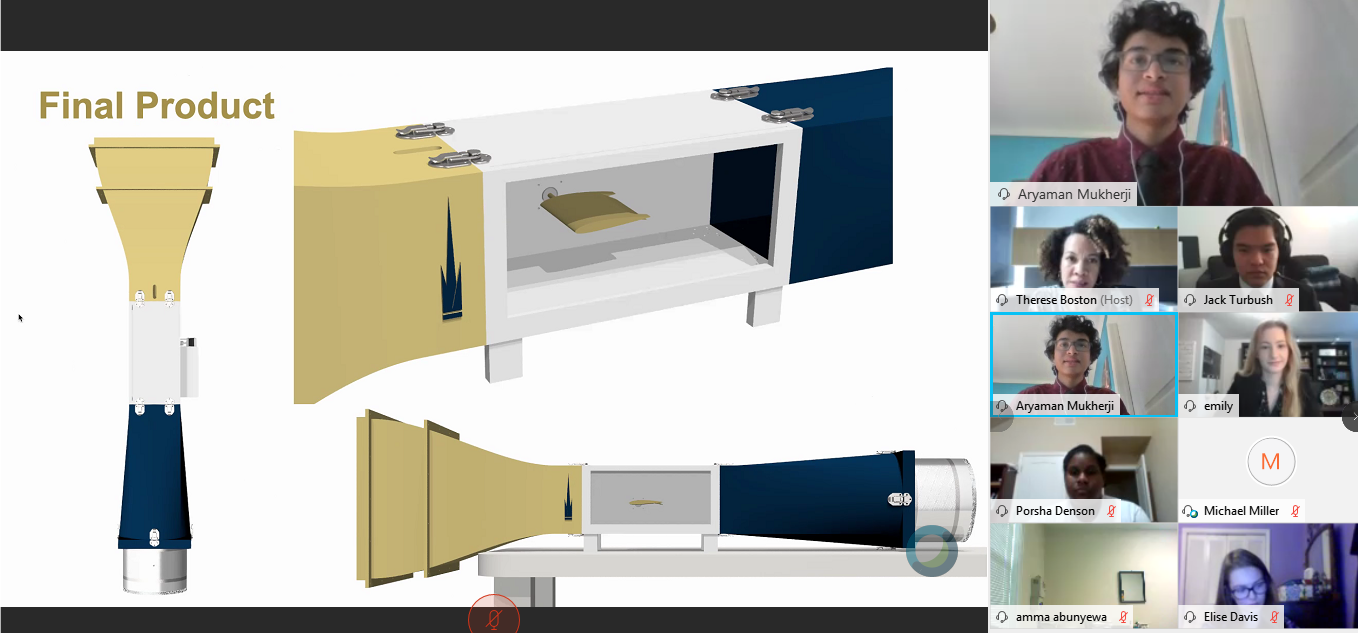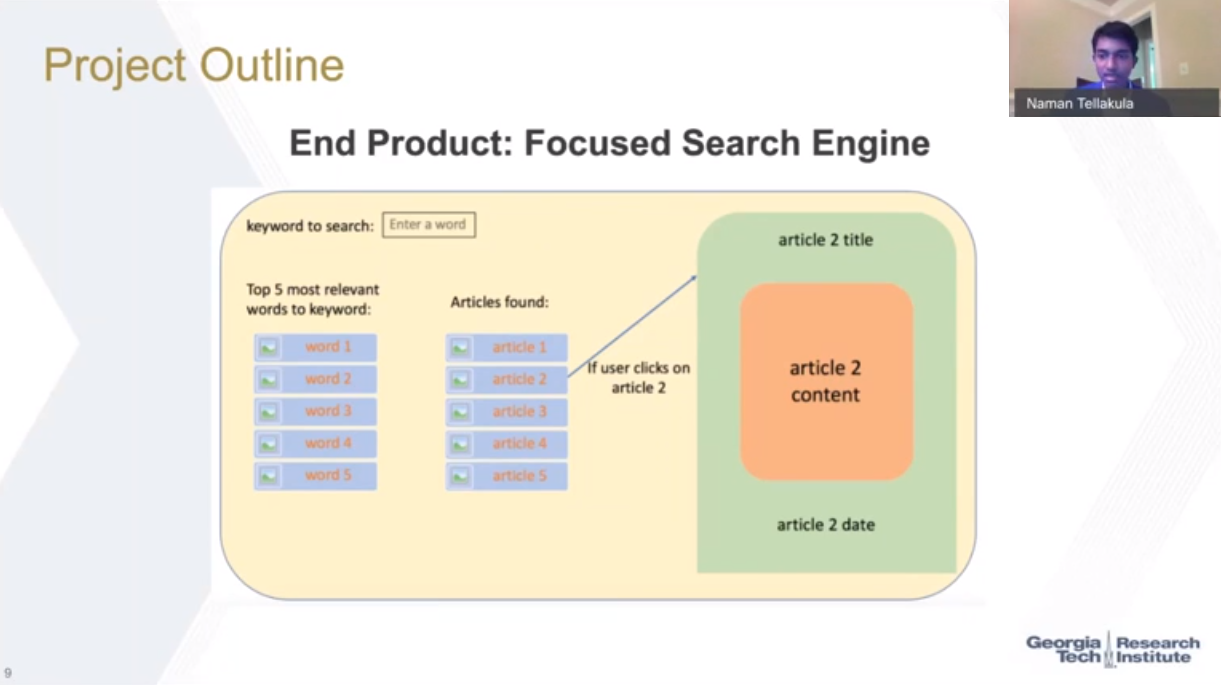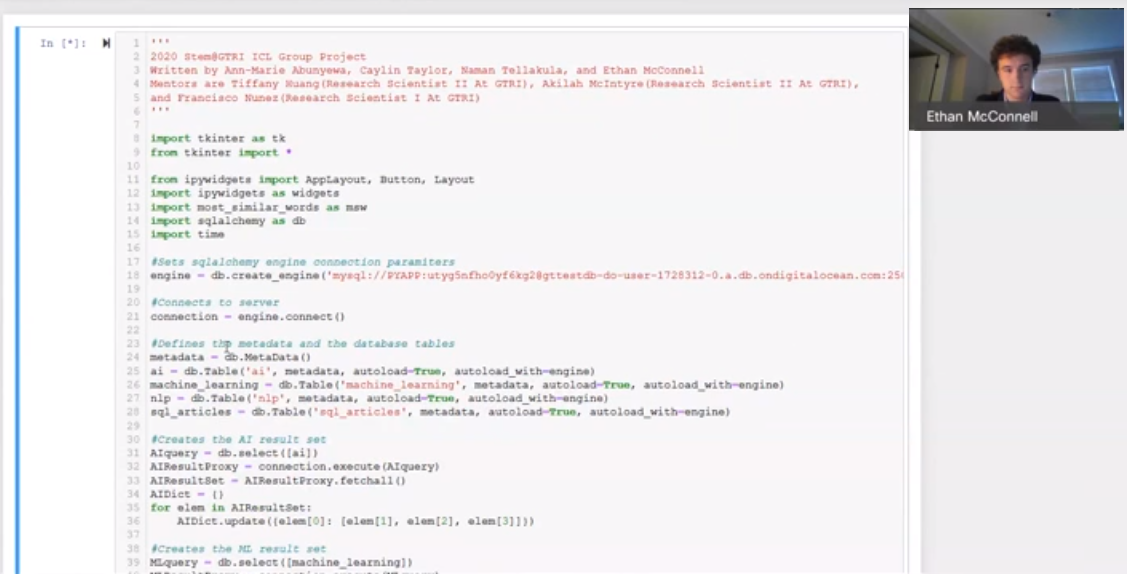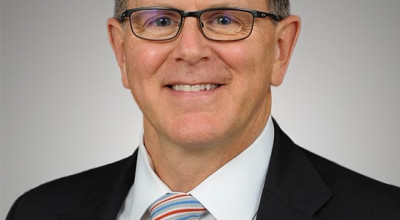
This summer, STEM@GTRI – the Georgia Tech Research Institute (GTRI) educational outreach program designed to inspire, engage, and impact educators and students in the fields of science, technology, engineering, and math (STEM) – embarked on their first virtual High School Internship Program, working with 26 GTRI professionals across seven of the eight GTRI labs.
On June 15, 55 students across Georgia, who were selected from an application pool of over 400, logged on to their computers. They soon set to work on a variety of virtual projects, including programming a robotic arm, developing an app for Bluetooth mesh networking, coding the responses for a virtual assistant for senior citizens, and much more. While GTRI has hosted various high school internships, this year’s program was the first to be conducted in a virtual format due to Covid-19.
"I decided to hold internships in a virtual format to ensure our high school students, especially graduating seniors, were given an opportunity to acquire an experience and access mentorship so that they would be able to make decisions on a college major and school to attend, based on an authentic work-experience as well as guidance from a career professional," said Erick Maxwell, GTRI senior principal engineer and STEM coordinator.
Even though the students would not be coming into GTRI’s labs, the program leaders were still determined to provide students with hands-on experience.
Reinventing a Wind Tunnel
Based out of GTRI’s Advanced Concept Laboratory, mentor Michael Miller facilitated a project for three students – Aryaman Mukherji (Wheeler High School), Jack Turbush (Wheeler High School), and Emily Winters (Peachtree Ridge High School) – to design a tabletop wind tunnel.

In essence, a wind tunnel is a long corridor with air flowing through it, designed to test the aerodynamics of objects. While high-profile organizations like Boeing and NASA use large wind tunnels to test airplanes and rocket ships, the students had another idea for the structure of their wind tunnel.
"Our main motivation for creating this wind tunnel was STEM outreach," said Mukherji, who had just completed his junior year at Wheeler Magnet School. "GTRI often creates road kits to be taken to schools and other events to show students the importance of STEM."
Once armed with an understanding of wind tunnels and a clear goal in mind, the team began designing their portable, lightweight tunnel. Since wind tunnels are constructed of three main sections – inlet, test, and diffuser/fan – each member of the group focused on one specific part in their computer-aided design (CAD) model before combining their plans in a final assembly.
"One of the hardest obstacles was that the students had different levels of expertise with CAD software," Miller explained. "Furthermore, it was a bit challenging to work together only virtually when talking about designing physical parts; however, their ability to adapt to that challenge will probably pay large dividends because the world has been consistently moving to outsourcing more CAD and design work to different countries."
Over five weeks, the three students worked diligently to model sections of the wind tunnel, optimizing various elements. Turbush developed multiple iterations of the inlet section, testing multiple angles of contraction and screens to reduce air turbulence. Winters, responsible for the test section, implemented a bipolar stepper motor responsible for robotically controlling the testing object’s angle in the chamber. The team also developed an airfoil to act as the primary testing object for demonstrations, though other objects can also be tested in the tunnel. Mukherji’s diffuser section was responsible for slowing the air back down. He implemented a fan that would suck the air out of the tunnel, therefore, producing more accurate results.
Because the students conducted all of this work from home, they could not 3D print the physical structure. However, the students prepared all the models, code, and documentation needed to produce and implement their project.
Human and Computer Communications
Communication is the foundational construct that enables humans to work together, learn new things, create solutions, and transfer these solutions into implementation. This same principle applies to technology. Computers need to be able to communicate with each other and with humans to operate as a useful tool. The way computers talk to each other is different from how humans interact, thus creating a need solved by natural language processing (NLP).

NLP is a branch of artificial intelligence that helps computers mimic human behavior. When properly coded, NLP allows computers to understand, interpret, and manipulate human language without any outside intervention. Mentors Akilah McIntyre, Tiffany Huang, and Francisco Nunez from GTRI’s Information and Communications Laboratory created a project to teach their interns all about NLP. During the internship, the students were tasked to develop a focus search engine that allows for a general analysis of text documents by implementing the principle of data science.
Students Ann-Marie Abunyewa (Wheeler High School), Ethan McConnell (Riverwood International Charter School), Caylin Taylor (Hapeville Charter Career Academy), and Naman Tellakula (Gwinnett School of Mathematics, Science, and Technology) spent their first two weeks of the program focused on learning the basics of artificial intelligence (AI), machine learning (ML), NLP, and structured query language (SQL) through research and assignments from their mentors.
Their end result was a fully functioning search engine where a user inputs a keyword, and the engine propagates relevant articles complete with authors and the article’s abstract. While the input and output may seem simple, there’s a long Python code behind the program the team had to construct to help humans and computers communicate.

While the students were teaching computers to understand humans, they were also learning how to best understand one another. Engaging in a virtual internship had some learning curves as the students learned to work together over email, Slack, and video conferences.
In addition to all the technical skills the team developed, Nunez said, "The students had to really focus on teamwork, they had to focus on collaboration, being able to solve problems, being able to communicate with each other effectively, and really being able to effectively present final work product to a specific audience."
Collaboration between Students and Mentors
Successful mentor relationships are founded on active collaborative and two-way communication. While mentors sometimes enter projects with an idealized plan, the questions and research presented by the students can help morph the goal of their work, creating an effective partnership.
"I definitely learned a lot of things from the students as a result of the program," Nunez said. "I think it was definitely a symbiotic relationship in which we (the mentors) learned a lot from them (the students), and they learned a lot from us as well."
Miller also found himself pleasantly surprised and impressed by the level of curiosity and openness the students carried with them through the program.
"Before I started the program, I kind of had an idea, you know, in my head [that] this is going to be the solution," Miller said. "But as they (the students) started doing research and asking questions, it really started evolving pretty quickly … They were able to do a lot of stuff with actual additions and robotics that I never even thought about doing."
Through STEM@GTRI’s Summer High School Internship program, students can network with working engineers and researchers in their respective fields.
"Each student enters our internship program for different reasons, including experience, guidance, financial support, resume-enhancement, and letters of recommendation," Maxwell said. "However, what they gain often goes beyond what they could preconceive, yet are lessons that benefit them for the rest of their lives."
From the researchers’ expertise, students learn a variety of technical skills as they explore coding, robotics, data science, cybersecurity, and more. While these skills can assist students in their education and future careers, working with GTRI researchers and forming connections with them is just as valuable.
"My biggest takeaway from this experience would have to be the confidence I gained in participating in the work that we did," said Jalen Oglivie, who had just completed his junior year at Campbell High School. "Engineering can be a challenging field to study in and even get jobs in sometimes. But thanks to this experience, I know I have the ability to thrive in the field that I’ve chosen."
As an organization transfixed on the future, it is GTRI’s responsibility to invest in students by cultivating their passions. Students bring their openness and curiosity, and GTRI provides them with a unique learning experience to grow into new STEM leaders.
"In offering an internship program to students, we are cultivating our STEM educators, researchers, and academics who we really do need in the future," McIntyre said. "It’s very important for us as professionals to reach out and share our time and our knowledge."
Writer: Katrina Heitz



